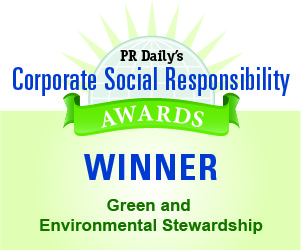Stanford University engages entire campus in sustainability efforts
Significant reduction of environmental footprint achieved by holistic approach targeting infrastructure and behavior.

As with most large research universities, Stanford requires a significant amount of natural resources to support its operations. With more than 1,000 buildings and other infrastructure spanning more than 8,000 acres, the university recognizes its responsibility to reduce its energy consumption, greenhouse gas emissions, water usage and waste generation, while working with the campus community to educate them on the importance of sustainability. How Stanford goes about delivering on its promise has resulted in a first-place prize in the “Green and Environmental Stewardship” category of PR Daily’s Corporate Social Responsibility Awards.
A Department of Sustainability and Energy Management (SEM) was established in 2007, and the Office of Sustainability came into being a year later. From supporting student projects and a robust internship program, to stewarding Stanford’s role as a leader among peer institutions, the office provides comprehensive and dynamic program opportunities that nourish a culture of sustainability and systematically identify opportunities for improvement.
SEM created the university’s first Energy and Climate Plan in 2009, establishing a vision for achieving an environmentally and economically sustainable energy supply. The university’s work at greening its energy supply has been admirable, reducing campus emissions by 72% today from peak levels. The campus will run on 100% renewable electricity by the end of 2021, achieving the goal of becoming 80% carbon free four years earlier than the target established by its president in 2018. At the same time, the president also set forth a target to achieve 90% diversion of waste from the landfill by 2030, which has now driven the formation of a Zero Waste Plan and Feasibility Study that will help to increase the diversion rate from the current 64%.
These results are impressive. Just as impressive, though, is the degree to which the university has sought to engage the entire campus in its sustainability efforts. In 2017, SEM launched the My Cardinal Green platform to encourage individual action. The platform, which has more than 4,000 users, consolidates broad conservation programs into one streamlined platform and offers personalized actions they can take to reduce their environmental footprint, with rewards for participation. The portal serves as an access point to connect with a broad range of campus resources supporting sustainability.
To promote the program, the university has developed promotional videos, a number of seasonal conservation campaigns and even a comic book for incoming students.
Congratulations to the entire Stanford University team.
View More Corporate Social Responsibility Awards 2019 Winners.
Visit Ragan.com/Awards to learn more about awards opportunities.


